|
Hello! Welcome to the second entry of the newest THL blog series; THL Fiery War Primers! In this series, we will bring you all you need to know about some of the strongest decks, from the best THL players, with new guides coming regularly. Our goal here is to bring you intel on the major aspects of a deck: core cards and card choices, piloting advice, advice when playing against it, and how it can fit into your THL lineups. We’ll bring you a different deck every week(ish), based on meta trends. It has been a long time since a meta took as long to develop as Scholomance Academy is taking. By this point in a regular meta, we’d already know all the tier 1 decks, and no big news would happen other than nerfs. This time, it feels like a new deck is coming up every single week. Even when nerfs come, it looks like a lot of decks are already poised to take the newly formed vacuum. Cyclone Mage, also known as Tempo Mage, Small Spell Mage, and Spell Damage Mage, is one of the latest decks to follow this trend. -LotusKnight, BZRK, basedinc, Icicles & rebobson 6) How do games play out with this deck? How do you balance tempo vs value? The deck offers several different paths to victory, and I’ll try to summarize each one here, though there will naturally be some overlap and opportunities in certain games to switch gears. Plan A) The Tempo Plan: This is more in line with classic Tempo Mage, using the cheap minions to quickly establish board presence, allow for favorable trades, and possible spell damage synergies. The optimal situation is an uncontested Chen'vaala on 3 that allows for a whole bunch of 5/5s, before most classes are able to do anything about it. A Mana Giant on Turn 4 or 5 can also be game-winning if you’re able to generate and cast a bunch of random spells. Key Cards: Lab Partner, Violet Spelling, Chenvaala, Solarian, Apprentice, Jandice Plan B) The Cyclone Plan: Going this route can often dovetail into the cheap Mana Giant mentioned before, but the primary focus of this approach is hitting Apprentice and Cyclone together early with as many cheap spells as you can afford to save and then figuring out the appropriate turn to go nuts. It’s important to know ahead of time which turn you’re aiming for, and if you have to deviate, be decisive as playing out your hand, generating the spells from Cyclone and making decisions with all the new options can very easily leave you against the rope. Key Cards: Violet Spellwing, Apprentice, Cyclone, The Coin, Ray of Frost, Magic Trick, Mana Giant. Plan C) The Value Plan: The inevitable extension of the Cyclone plan, this is more than just a single turn pop-off, it’s a philosophy you should keep in mind against tougher matchups such as Bomb Warrior. If the Tempo Plan isn’t going to get you there fast enough, taking greedy choices from your discover effects gives you staying power to potentially overwhelm your opponent’s resources. This can be particularly effective against Paladin and Priest, classes that generally lack card draw, as you can find yourself eliminating any proactive plays they make while forcing them to react inefficiently to you. Key Cards: Cram Session, Wand Thief, Primordial Studies, Conjurer’s Calling. Plan Z) The Burn Plan: Saving the most important for last because it can come up in any game on a moment’s notice. Mage does not have natural healing, so some matchups turn into a race pretty early on. Also, particularly with the Tempo Plan, you may be running yourself low on resources in order to push the early game; bearing in mind what you’ll need to finish the game, whether it’s extra spell damage for Ras, Fireballs from Wand Thief, or an empty hand for better Evocation lethal odds, it’s incredibly important to think about how you win the game from any position and plan accordingly. And sometimes, your only out is Solarian Prime. Key Cards: Ras Frostwhisper, Primordial Studies, Evocation, Solarian Prime. 7) What cards are you looking for in the mulligan? Always Keep: Violet Spellwing Lab Partner Sorcerer’s Apprentice Primordial Studies Astromancer Solarian Sometimes Keep: Cram Session (if you have any spell damage cards or against control or the mirror) Wandmaker (when going first) Wand Thief (if you have a turn 2 activator) Magic Trick (when you know you’ll need specific cheap spells in the matchup, such as extra Devolving Missiles vs. Rogue or Paladin, or if you’re setting up for the Cyclone Plan) Firebrand (against Rogue, Hunter and other aggro matchups. In the mirror, you prefer to be the second person playing it) Don’t keep (without a very specific reason): Mana Giant (need coin, cyclone, apprentice, and not expecting early pressure against you) Conjurer’s Calling (in a very slow matchup) Ras Frostwhisper (unless you’re against something token-based and have additional early game responses already) Arcane Intellect (unless you’re in a slower matchup where patience can be rewarded) Jandice Barov (better early tempo options available) 8) How do you play against this deck? Are there tech cards that work well against it? The best way to beat this deck is to aggro them down, before they can go off and active their payoff cards. If you can pressure them and force them to spend resources early, you can win this matchup; that is how Face Hunter and Aggro Rogues can get there. Dealing early damage and going for a burn plan can also work quite well, leading to Bomb Warrior’s strong matchup. Cult Neophyte can be very strong against this deck, by protecting your board. If you feel like there’s a chance they may combo, it will delay the combo by 1 turn. Ogremancer can be a tech against the deck; although usually a weird choice, it can work well to generate a board when they combo. 9) What are some future developments for cyclone mage? In general, Cyclone Mage’s future developments will be dictated largely by the rest of the meta. One of Cyclone Mage’s greatest strengths is how flexibly it can play for tempo, value, or both (via Sorcerer’s Apprentice combo turns) because it discovers so many cards per game. Since Cyclone Mage’s core is practically in its final stages, the flex spots will be filled based on the rest of the field. For instance, if the meta slows down, Cyclone Mage may consider one or two Conjurer’s Calling. If the meta speeds up, Cyclone Mage could run two copies of Firebrand. Unfortunately, this kind of conjecture only extends as far as one’s insight into future meta trends. That fact notwithstanding, I want to highlight three recent developments from Orange, Apxvoid and Jambre. Orange secured a top 16 finish in August and hit rank 1 Legend in September with a unique build that plays two copies of Arcane Breath and Cobalt Spellkin. Though the deck has been around for more than 2 weeks, players were slow to adopt one of its most important innovations: Wandmaker. Though it’s not yet certain whether Wandmaker is truly core, it has shown good results thus far, and its ability to provide both tempo and value makes it a strong candidate for inclusion. Only in the last week has it really become a staple in the majority of players’ lists. Though it seems most people prefer the typical non-dragon list, Orange has been a strong proponent of his list, and APAC Grandmaster Che0nsu recently vocalized his support on Twitter after hitting rank 2 Legend with the deck. I’m expecting Orange’s list to become more popular, at least in the short term, because Frenetic won Masters Tour Montreal with it. A much more recent (and I think far more interesting) development has come from Apxvoid - the Mage God himself - and I experienced it firsthand in a ladder game that left me a little confused and very intrigued. Apxvoid has cut Wandmakers, claiming they are usually too low-impact, for Frostbolts and Jandice for Mozaki, though he admits Mozaki might not be optimal. Mozaki allows Cyclone Mage to adopt a totally different, burn-oriented game plan against slower decks that run lots of removal. Priest, for example, is almost defenseless against burn from hand. Though Frostbolt has clear synergy with Mozaki, I’m much more interested in its potential against weapon-based decks. Notably, Frostbolt seems extremely good against Soul Demon Hunter, which relies entirely on weapon swings for its burst damage, is one of Cyclone Mage’s worst matchups, and has become much more popular at high Legend lately. Apxvoid has taken Frostbolt - a card that has historically been treated merely as cheap burn damage - and begun an investigation into its potentially matchup-flipping utility. Finally, Jambre has gone even more left-field, expanding further on Orange's Dragon Package and taking the deck firmly in a much purer Tempo Mage direction. Through cutting Mana Cyclones, which in some way influence your gameplan and usage of resources, Jambre has instead expounded the virtues of Imprisoned Observer, claiming the card is simply too good to not be run in any Mage archetype. Through playing simply for board and tempo, and relying solely on the Dragon package to provide the value generation to enable the decks main payoff cards in Mana Giant, his thought process is that freeing Sorceror's Apprentice up for the earliest possible tempo usage is more beneficial in the long-term. It will be interesting to see if this philosophy catches on amongst other players; there are some early signs, with copies of Imprisoned Observer making their way into some Grandmasters decks this weekend. 10) If they nerf this deck, what cards would you expect to be affected? 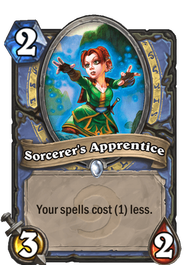 We all know it’s going to happen at some point. Sorcerer’s Apprentice is a broken card, and has been ever since the dawn of Hearthstone. This card combos well with basically any tempo card printed for Mage; this includes all the spell lovers and small spells. Chenvaala, Mana Cyclone, Mana Giant, Magic Trick, etc: All these cards are playable because Apprentice is there to enable them. Apprentice will often let you play 10 extra mana in a turn. It is not an exaggeration to say this whole deck is enabled by Apprentice, and without it would be unplayable. That being said, it is a matter of time until Apprentice is either nerfed or moved to Wild (probably the former, as it also breaks Wild with Quest Mage). Our guess is that even if it is not changed right now, it will be by April when the next Hall of Fame should happen. 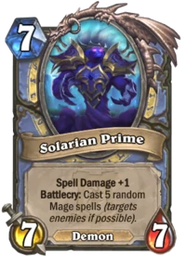 There are other ways to balance this deck, without ending it. Solarian Prime could also be modified. Right now it has a strong body as well as an insane effect, coming in at turn 7. A natural change would be to make it cost 8 mana, or lower its stats to a 5/5 or a 6/6. This would make it come into the game one turn later, or make its body slightly less effective, which would hurt the deck without obliterating it. The card would still be viable and played in this case. 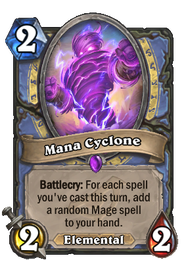 The third solution would be to nerf Cyclone. Increasing this card’s cost by one would make it a lot weaker, as it would take one more turn until the spell train can come in, and would make it harder to fit when your hand does not consist of all 1 cost spells. That being said, Cyclone is a very balanced card in a universe without Apprentice, so it is hard to see that they would opt to balance this card instead of the problematic source. 11) What should I take from Primordial Studies?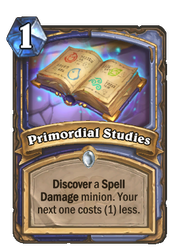 Primordial Studies is a core card in Cyclone Mage. Choosing the right card from it is often the difference between winning or losing a match, but taking a card from Primordial Studies is context dependent. Your choices are very limited, but there are definitely cards you are looking for more than others. We will go over the main choices you should be looking for in this Section. We note other choices not mentioned here may be correct in some specific contexts, but these are generally strong options and ways to think about this Discover effect. First, additional copies of Lab Partner and Astromancer Solarian are the best two choices. You already run copies of these cards in your deck, so you certainly would like to run more. Solarian Prime is often your win condition, so whenever you can you should shuffle additional copies of it into your deck. The fact that the original form is also a decent card on its own means you also are not sad with just summoning a 2 mana 3/2 with Spell Damage +1. Lab Partner is just a card that very easily fits into any curve, and works out well with many of your spells, so adding copies of it to your hand is never a bad idea. There are very few situations where one of these two should not be taken from Primordial Studies when they are offered. 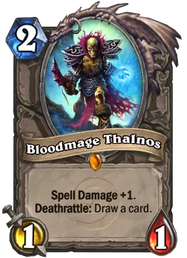 You will not always be lucky enough to obtain one of these two though; there are other cards that can pop up and be helpful nevertheless, such as Bloodmage Thalnos. Although it is not a great card in the current meta (having only 1 health really does not help), it can give you card draw. Lacking card draw is often a reason this deck loses, so cycling with Thalnos can be crucial. In a similar vein, the lowest cost card is very often the right option, as it is easy to fit in your curve and get an extra card draw from Cram Session. In this case, keep an eye out for Kobold Apprentice and Mana Reservoir. These are not as good as the ones mentioned before, but an additional card draw and Spell Damage can be worth it. 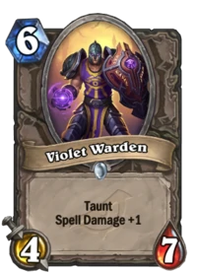 It may sometimes happen that you require a minion with taunt, to block your aggressor from repeatedly hitting your face. That is where Violet Warden comes in. It has a nice 4/7 body, but most importantly, it taunts you up. An unusual option, but a valid option in mostly aggressive matchups. Against Priests, it may be wise to choose Violet Warden due to Priest’s inability to deal with high health, 4 attack minions. 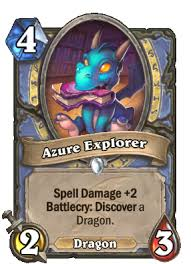 Azure Explorer is another card that can be very strong in the right situations. Against control decks, discovering a Dragon gives you an extra source of late game fuel, so it can be the right option in certain situations; sometimes you just win with a generated, active Dragonqueen Alexstrasza. This card is also ideal when it can be played directly with Cram Session, as it means you will draw 3 cards instead of 2. 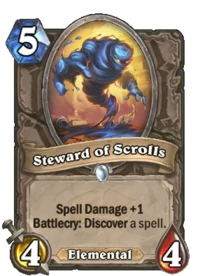 Azure Drake’s elemental cousin, Steward of Scrolls is another option that can be right in certain situations. If you need an elemental to trigger a generated Elemental Allies, or if you need a midrange body and a spell generator against a slower deck, this card can work quite well. Generating a card is very useful once your hand is empty, so you can keep this one in mind, especially against control decks. Probably the flashiest option one could take, Malygos can be correct in very few and specific scenarios, as a way to generate an OTK win condition against some decks, or (most likely) to serve as a big body in the late game. If Malygos is not removed, this should lead to your opponent losing the game. Just be aware that this choice is very rarely correct due to the tempo loss of spending 9 mana, and that it serves as a very fringe win condition, especially once you know your opponent is running out of removal cards. Here is another friendly reminder that Priest does not want to deal with 4 attack minions. A similar option is Kirin Tor Tricaster, although this card has negative synergy with several of your other cards, and should only be taken for an Arcane Missiles OTK, or for its synergy with Ras Frostwhisper. That being said, these combos can be memes, and you would do well to stay away from them most of the time. 12) In what lineups does cyclone mage fit well? First and foremost, it’s important to recognize you shouldn’t bring Cyclone Mage simply because HSReplay says it has good matchups against decks you’re expecting. It’s a relatively difficult deck to play, which means favored matchups might not feel favored without sufficient experience. Fortunately, Masters Tour Montreal has given us a(n admittedly small) sample of relatively high-quality matchup data. There were about 1,600 games of Cyclone Mage played! The deck saw significant representation in swiss lineups, it appeared in half of the top 8 lineups, and it was included in Frenetic’s winning lineup. Though there are certainly matchups where Cyclone Mage dominates with ease (e.g. Stealth Rogue), there are many more matchups which are nearly even and require a lot of good decision-making (e.g. Malygos Druid, Face Hunter, Secret Rogue). Cyclone Mage fits naturally into lineups that want to ban Soul DH or Bomb Warrior. These matchups are among Mage’s worst popular matchups. Frenetic’s lineup is a great illustration of how heavily you can lean into a ban Warrior strategy. He brought Orange’s Cyclone Mage, Soul Demon Hunter, Highlander Priest, and Pirates + Galakrond Bomb Warrior. That marks the end of our comprehensive detailing of Cyclone Mage; I know this series isn't exactly turning out to be weekly, but we have plenty more Fiery War Primers in the works. If you have a deck or archetype you would like us to cover next, make sure to message rebobson or LotusKnight with the idea, we may even already have it in the pipline! We hope you learned something from this, and hope you get plenty of wins in THL with Cyclone Mage from here on out.
-LotusKnight, BZRK, basedinc, Icicles & rebobson
0 Comments
Leave a Reply. |
AuthorThe THL blog is curated and edited by THL's Content Managers. All THL members are welcomed and encouraged to pitch ideas for articles they would like to see on the site. If you have an idea, please reach out to LotusKnight on Discord or via the THL Help email address: [email protected] Archives
December 2023
Categories
All
|
This website is not affiliated with Blizzard Entertainment.
Icons made by Freepik & Smashicons from www.flaticon.com is licensed by CC 3.0 BY
Icons made by Freepik & Smashicons from www.flaticon.com is licensed by CC 3.0 BY
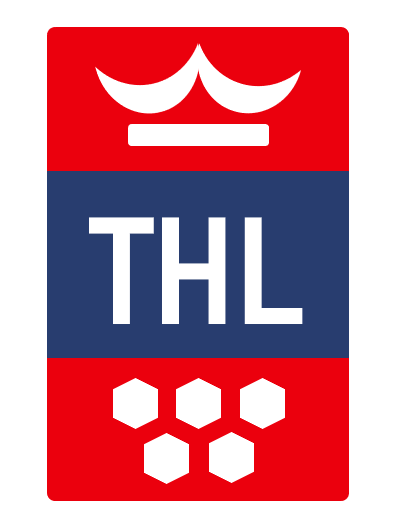
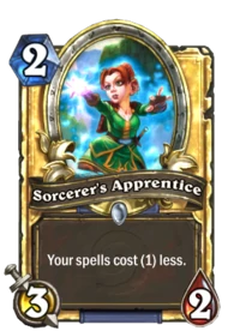
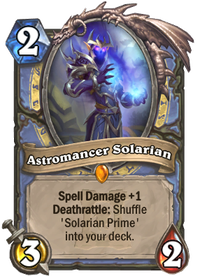
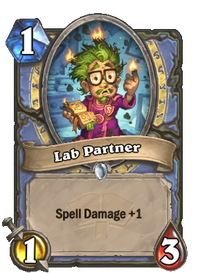
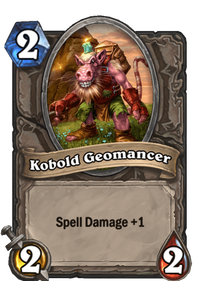
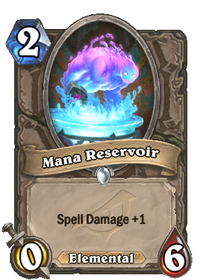
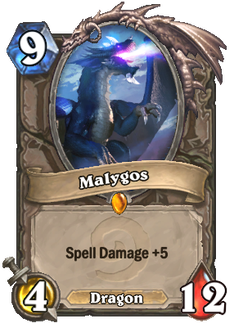
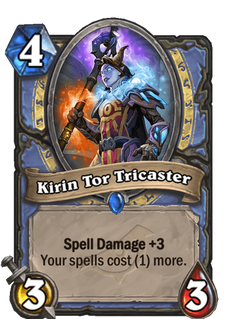
 RSS Feed
RSS Feed